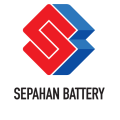EFB Technology
As a solution to reduce fuel consumption and emissions of carbon dioxide, the use of start-stop technology in the world is expanded. EFB (Enhanced Flooded Battery), as the most advanced type of liquid electrolyte battery, is designed to meet the needs of vehicles with this technology. However, EFB is also suitable for conventional vehicles with high electrical consumption as well as those that require a high number of starts during the day, having high startup power, longer life (at least 2 times) and less internal resistance than conventional batteries, and ability to operate in incomplete charge mode (PSOC).
EFB batteries’ features:
- Increasing grid corrosion resistance
- Reducing grid growth by using full-frame grids
- Reducing the possibility of short circuit and separator rupture
- Reducing water consumption by using improved alloy
- Increasing dynamic chargeability: high charging speed
- Prevent sulfatation of negative plates in PSOC mode
- Increasing the cyclic life of the battery by improving the positive paste structure
- Improving battery performance at high discharge depths.
GEL Technology
In general, in VRLA batteries, due to oxygen recombination, consumption is lower and thus they are Maintenance Free (MF). In addition, due to the stabilization of the electrolyte in a fixed bed (gel for gel batteries and absorbed glass mat layer for AGM batteries), there is no risk of acid leakage and splashing even when the battery is tilted. Finally, the number of charge-discharge cycles of the battery is more, since acid is not layered in VRLA batteries. Gel technology is a type of VRLA (Valve Regulated Lead Acid) battery with a gel electrolyte, in which the sulfuric acid is mixed with fumed silica, making the resulting gel-like. The gel in the battery offers high opposition to leakage and increased permanence with little maintenance and no need for watering. Gel batteries do not need to be kept upright unlike flooded lead-acid batteries. In addition, gel batteries reduce electrolyte evaporation and corrosion problems in comparison with wet cell batteries. They have greater resistance to vibration and shock too.
Gel technology is used by SBIC in UPS & solar batteries.
Gel technology
SBIC uses Gel technology in its Uninterruptible Power Supply (UPS) batteries. Hospitals, banks, data centers, firefighting equipment, emergency services, and residential complexes (keeping public thoroughfares bright) are examples of applications of UPS batteries.
UPS batteries’ features:
- Suitable for the stand-by application
- Maintenance Free (MF)
- Low self-discharge
- High energy density
- The vast range of environmental temperature
- Service life
- Pressure regulated valves
- Compliance with the international standards
Gel technology
In addition to UPS batteries, SBIC has solar batteries that have oxygen recombination technology and do not require maintenance, meaning that they do not need to be checked for electrolyte level and to frequently adding water while being used. It is because the oxygen recovery cycle prevents water loss and the gel electrolyte minimizes the possibility of acid leakage from the battery. Unlike batteries with liquid electrolyte, there is no acid layering phenomenon in this type of stabilized electrolyte, which as well as increases battery life and makes it suitable for industrial use by reducing grid corrosion and reducing water consumption.
SBIC’s solar batteries are manufactured in accordance with the requirements of IEC 61427-1 international standard and have apt performance conditions and efficiency. The most important usages of these batteries is as a source of energy in solar panels and wind turbines.
Solar batteries’ features:
- Suitable for frequent charge-discharge
- Maintenance Free (MF)
- Low self-discharge
- High energy density
- Vast range of environmental temperature
- Service life
- Pressure regulated valves
- Compliance with the international standards

